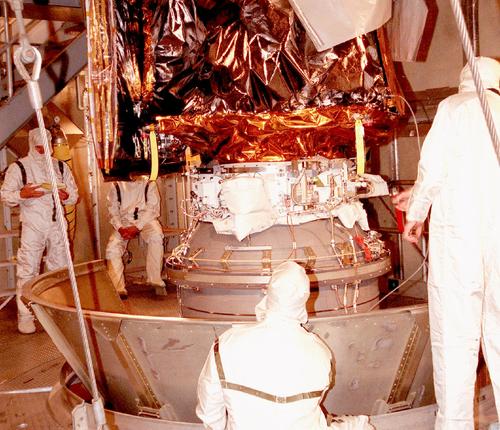LM 0.0 Introduction and Review Collection
Tags | |
UUID | 1e30345f-f145-11e9-8682-bc764e2038f2 |
0.0 Introduction and review by Benjamin Crowell, Light and Matter licensed under the Creative Commons Attribution-ShareAlike license.

The Mars Climate Orbiter is prepared for its mission. The laws of physics are the same everywhere, even on Mars, so the probe could be designed based on the laws of physics as discovered on earth. There is unfortunately another reason why this spacecraft is relevant to the topics of this chapter: it was destroyed attempting to enter Mars' atmosphere because engineers at Lockheed Martin forgot to convert data on engine thrusts from pounds into the metric unit of force (newtons) before giving the information to NASA. Conversions are important!
Chapter 0. Introduction and review
If you drop your shoe and a coin side by side, they hit the ground at the same time. Why doesn't the shoe get there first, since gravity is pulling harder on it? How does the lens of your eye work, and why do your eye's muscles need to squash its lens into different shapes in order to focus on objects nearby or far away? These are the kinds of questions that physics tries to answer about the behavior of light and matter, the two things that the universe is made of.
0.0 Introduction and review by Benjamin Crowell, Light and Matter licensed under the Creative Commons Attribution-ShareAlike license.
Calculators and Collections
- Comments
- Attachments
- Stats
No comments |
